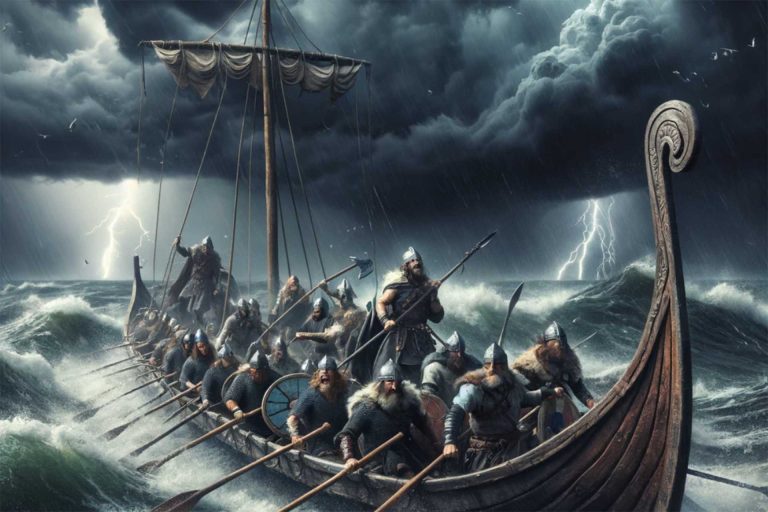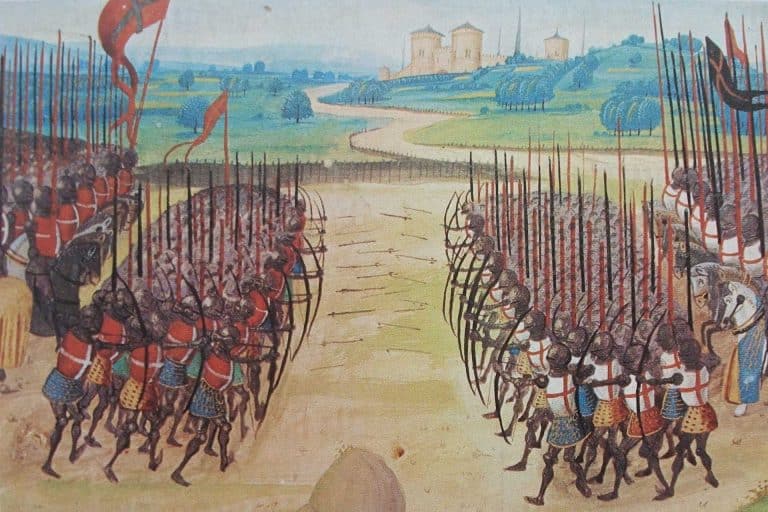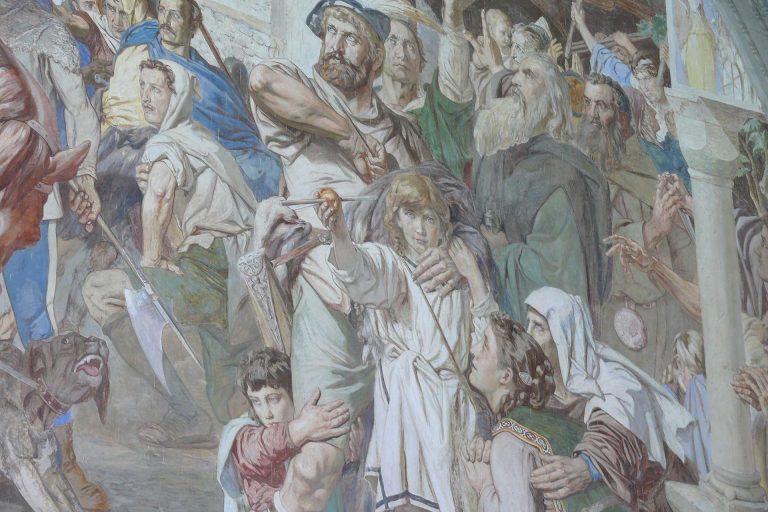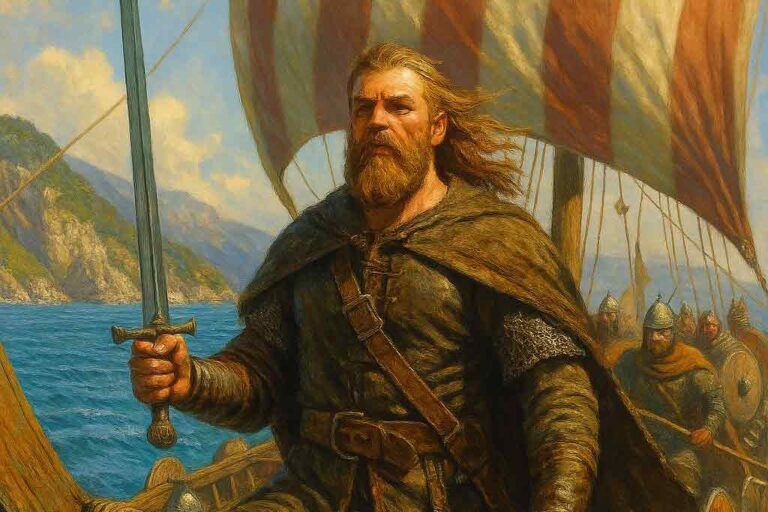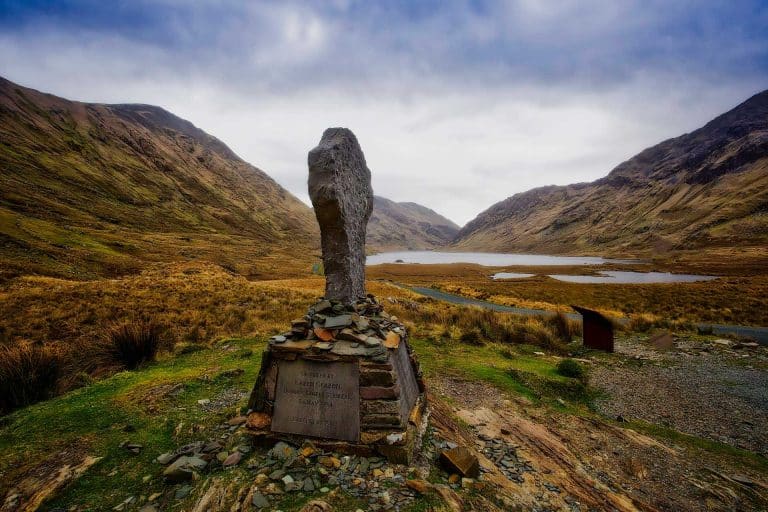Celtic Pride: The Legacy of Vercingetorix
In a time when the Gallic tribes were fractured by rivalry and localism, Vercingetorix emerged as a rare figure of unity and purpose. Born into Arvernian nobility around 82 BCE, he defied expectations by forging a powerful alliance among warring Celtic clans to resist the tide of Roman conquest. His leadership reached its pinnacle during the Gallic Wars, where he became the most formidable opponent Julius Caesar would face.
Set against the backdrop of Rome’s relentless expansion, Vercingetorix’s resistance was both military and symbolic. Though ultimately defeated and paraded through the streets of Rome before his execution, he left behind a legacy that transcended his downfall. Revered in modern France as a national hero, Vercingetorix remains a symbol of the enduring spirit of resistance and Celtic unity.
Origins and Rise to Power of Vercingetorix
Vercingetorix was born into the noble Arverni tribe, one of the most powerful Celtic groups in Gaul. His father, Celtillus, had once sought to unify the Gallic tribes under his leadership but was executed by his peers for aiming too high. This early tragedy imprinted on Vercingetorix a deep understanding of both the allure and danger of centralized power in a fiercely independent culture. Raised in the mountainous region of what is now central France, he would come of age as Rome’s ambitions in Gaul began to intensify.

The Roman incursions into Gaul during Vercingetorix’s youth were not just military campaigns—they were seismic political shifts. Julius Caesar’s arrival in 58 BCE marked the beginning of a calculated conquest, which exploited tribal rivalries and secured alliances to divide and conquer. Vercingetorix witnessed firsthand the devastating effects of Roman divide-and-rule tactics. At the same time, Gallic unity seemed a distant dream, as intertribal warfare and jealousy weakened any attempt at collective resistance.
In 52 BCE, as Roman pressure mounted, Vercingetorix made his move. Initially rejected by the Arverni elite for advocating resistance, he raised a rural army and retook control of his tribe by force. His rise was meteoric—not merely a coup but the beginning of a national movement. “He was a man of great ability,” Caesar later wrote in Commentarii de Bello Gallico, noting Vercingetorix’s rare combination of bravery, cunning, and natural authority. He quickly positioned himself not just as a warlord, but as the chosen leader of all Gaul.
What made Vercingetorix exceptional was his ability to unite a notoriously fragmented region. The Gauls shared language, culture, and spiritual beliefs, but political cohesion had always eluded them. Through diplomacy, force, and inspiration, Vercingetorix secured the allegiance of powerful tribes like the Bituriges, Carnutes, and Senones. His vision of a united Gallic front was as unprecedented as it was ambitious. For a brief but brilliant moment, many Gauls set aside their differences to follow one man into battle.
War Against Rome
By the time Vercingetorix assumed leadership in 52 BCE, Julius Caesar had already been campaigning in Gaul for several years, documenting his victories in Commentarii de Bello Gallico. Caesar’s goal was not just territorial conquest but political prestige, and the subjugation of Gaul was central to that ambition. Vercingetorix’s uprising posed the most significant challenge Caesar had yet faced—unlike other tribal leaders, this young Arvernian noble wielded both military skill and a vision of a united Gaul.
Vercingetorix’s military strategy relied heavily on guerrilla tactics. Rather than engaging in open battle, where Roman discipline and siege equipment would likely prevail, he waged a war of attrition. Villages and fields were burned, food stores were destroyed, and civilians evacuated—all to deny Caesar’s legions the resources they needed. “He decided to wage war not by engaging in battle, but by devastating the countryside,” wrote Caesar of his adversary. These scorched-earth tactics demoralized the Romans and disrupted their carefully organized supply chains.

Psychological warfare became a hallmark of Vercingetorix’s campaign. He understood the Roman mindset and exploited it. Harassment of supply routes, swift cavalry raids, and the constant threat of ambushes wore down Roman troops, who were unaccustomed to fighting a mobile enemy on unfamiliar terrain. His use of mounted warriors, especially from the fearsome Gallic cavalry, gave him an edge in speed and surprise. This unrelenting resistance forced Caesar to spread his forces thin and engage on multiple fronts.
Vercingetorix’s crowning battlefield success came at the Battle of Gergovia. Positioned atop steep hills near the Arverni capital, he repelled a Roman assault that ended in retreat and heavy Roman casualties. It was one of the few times Caesar suffered an apparent defeat during the Gallic Wars. The victory at Gergovia proved that the Roman war machine was not invincible and boosted morale across Gaul. More tribes rallied to Vercingetorix’s cause, emboldened by the possibility of Roman defeat.
Despite these successes, the war took a heavy toll. Tribal loyalties remained fragile, and Caesar’s political cunning continued to divide key factions. The brutal nature of the scorched-earth policy also weighed heavily on civilians, many of whom faced starvation or displacement. As the Romans regrouped and reinforced, Vercingetorix was forced into a more defensive posture, eventually taking refuge at Alesia—a decision that would mark the beginning of his final stand.
Even in retreat, Vercingetorix remained a formidable foe. His war against Rome had evolved into more than a rebellion—it was a defining cultural struggle. By turning scattered resistance into a coordinated campaign, he gave Gaul its last, best chance to remain free. Though the tide would eventually turn against him, the war he led would become a symbol of defiance and unity remembered long after the legions marched home.
Siege and Surrender at Alesia
The fortified hilltop city of Alesia, situated in present-day Burgundy, was strategically chosen by Vercingetorix as his final stronghold against the Roman advance. Surrounded by steep terrain and protected by defensive walls, Alesia provided a naturally defensible position. Vercingetorix, believing the site would buy time for reinforcements, gathered his remaining forces—estimated by Caesar to number around 80,000—along with thousands of non-combatants. However, this decision would test the limits of his leadership and the endurance of his people.
Julius Caesar, recognizing the critical nature of the confrontation, constructed a double ring of fortifications around Alesia. The inner line contained the Gauls; the outer one protected against a relief army expected to arrive. Caesar’s siege works stretched for miles and included ditches, ramparts, watchtowers, and traps. Despite being trapped and low on supplies, Vercingetorix maintained order and morale, urging his warriors to hold fast until help could arrive. He orchestrated sorties to break the Roman lines and coordinated signals with the incoming Gallic relief force.
The relief army, perhaps numbering more than 200,000, eventually arrived and launched a coordinated attack. For days, the battle raged on two fronts. Inside the city, Vercingetorix led desperate charges; outside, Gallic reinforcements assaulted the Roman outer defenses. But Caesar’s discipline and engineering prevailed. The relief force was defeated, and Alesia was left isolated and starving. Facing certain annihilation, Vercingetorix made the fateful decision to surrender—for the sake of his people.

Ancient accounts, especially Caesar’s writings, describe the surrender in dramatic terms. According to legend, Vercingetorix donned his finest armor, mounted his horse, and rode solemnly through the Roman lines. In front of Caesar, he dismounted, removed his weapons, and bowed his head in silence. It was a moment rich in symbolism: the proud leader of a defiant people acknowledging the might of Rome—not with words, but with dignity.
Imprisonment and Execution
After the dramatic surrender at Alesia, Vercingetorix was taken in chains to Rome—a captive symbol of Caesar’s greatest military conquest. The journey itself was humiliating, as the former Gallic leader was paraded through Roman towns, displayed as a trophy of imperial dominance. Upon arrival in the capital, he was imprisoned, not tried or sentenced immediately, but kept alive to serve a political purpose. Rome, and Caesar in particular, had a tradition of saving their most prized captives for grand public spectacles.
For six long years, Vercingetorix languished in the Tullianum, a dank underground prison reserved for enemies of the state. Though records of his time there are sparse, the conditions were notoriously harsh. Roman sources say little about his treatment, but the psychological weight of knowing his fate was sealed must have been immense. He was kept alive, not out of mercy, but to be brought out during Caesar’s eventual triumph—a parade designed to cement the general’s power and popularity.
In 46 BCE, that moment arrived. As Caesar celebrated his four-day triumph in Rome, Vercingetorix was forced to march in chains before the cheering crowds. Ancient accounts suggest he was jeered and pitied in equal measure, his once-proud figure now a living artifact of conquest. After the spectacle ended, he was led to a secluded cell and executed by strangulation, in keeping with Roman custom. There was no trial, no last words recorded—just the silent extinguishing of a national symbol.
His death marked more than the end of a man; it was a symbolic death knell for Gallic autonomy. Though sporadic uprisings would continue, no figure emerged with the same charisma or vision as Vercingetorix. The dream of a unified, independent Gaul died with him in that Roman dungeon. Caesar’s authority in the region was now complete, paving the way for Gaul’s assimilation into the Roman world for centuries to come.
Yet even in defeat, Vercingetorix’s legacy endured. His resistance delayed Roman domination, and his leadership inspired later generations of French nationalists. In the eyes of his people—then and now—he did not die as a criminal, but as a martyr. The manner of his execution only heightened the sense of injustice and heroism that would surround his name in centuries to follow.
While Rome celebrated a victory, history would remember the courage of the man they condemned. Vercingetorix’s imprisonment and execution did not erase his impact—it only deepened the myth. The chains that bound him became the very symbol of his people’s lost freedom, and his death helped forge a memory far more enduring than any Roman triumph.

Cultural Symbolism and Legacy in Ancient and Modern History
Vercingetorix first entered the historical record through the writings of his conqueror, Julius Caesar. In Commentarii de Bello Gallico, Caesar described him as a formidable enemy—“a man of great ability, whose influence extended far and wide.” Though the text was crafted to glorify Caesar’s achievements, it paradoxically immortalized Vercingetorix as the only Gallic leader capable of uniting the tribes against Rome. His portrayal as both noble and dangerous laid the foundation for a legend that would transcend Roman propaganda.
For centuries, Vercingetorix remained a largely forgotten figure, buried under Roman rule and later medieval obscurity. But in the 19th century, amid the rise of French nationalism, he was rediscovered as a symbol of resistance. Following France’s defeat in the Franco-Prussian War, leaders and intellectuals sought historical figures who embodied national unity and defiance. Vercingetorix, who had once rallied a divided Gaul against a foreign invader, was the perfect candidate.
Napoleon III, eager to draw parallels between his regime and past national greatness, embraced Vercingetorix as a patriotic icon. He commissioned archaeological excavations at Alise-Sainte-Reine, believed to be the site of Alesia, and erected a monumental statue there in 1865. The sculpture, bearing the inscription “Gaul united, forming a single nation, animated by the same spirit, can defy the universe,” reimagined Vercingetorix not as a defeated warrior, but as the first unifier of the French people.
In this recontextualization, Vercingetorix came to symbolize Celtic pride, cultural identity, and resistance against oppression. His legacy resonated with ideals of independence, courage, and the enduring will to self-determination. Artists, poets, and historians embraced him as a romantic figure—the noble barbarian who fought for freedom. His story began appearing in French literature, history textbooks, and even popular fiction, reinforcing his mythic status.
The statue at Alise-Sainte-Reine became a site of national pilgrimage, a reminder of a deeper French identity rooted in pre-Roman Gaul. French schoolchildren were taught his story as part of the nation’s foundational history, with Vercingetorix cast as a precursor to modern heroes of resistance. He appeared in cartoons, novels, and films, his name becoming shorthand for pride in regional heritage and cultural resilience.
Today, Vercingetorix remains a touchstone of French identity. He represents the possibility of unity in the face of overwhelming odds and the enduring strength of cultural memory. While Rome claimed victory on the battlefield, history has granted Vercingetorix a different kind of triumph—one of remembrance, inspiration, and national pride that continues to echo through the centuries.


